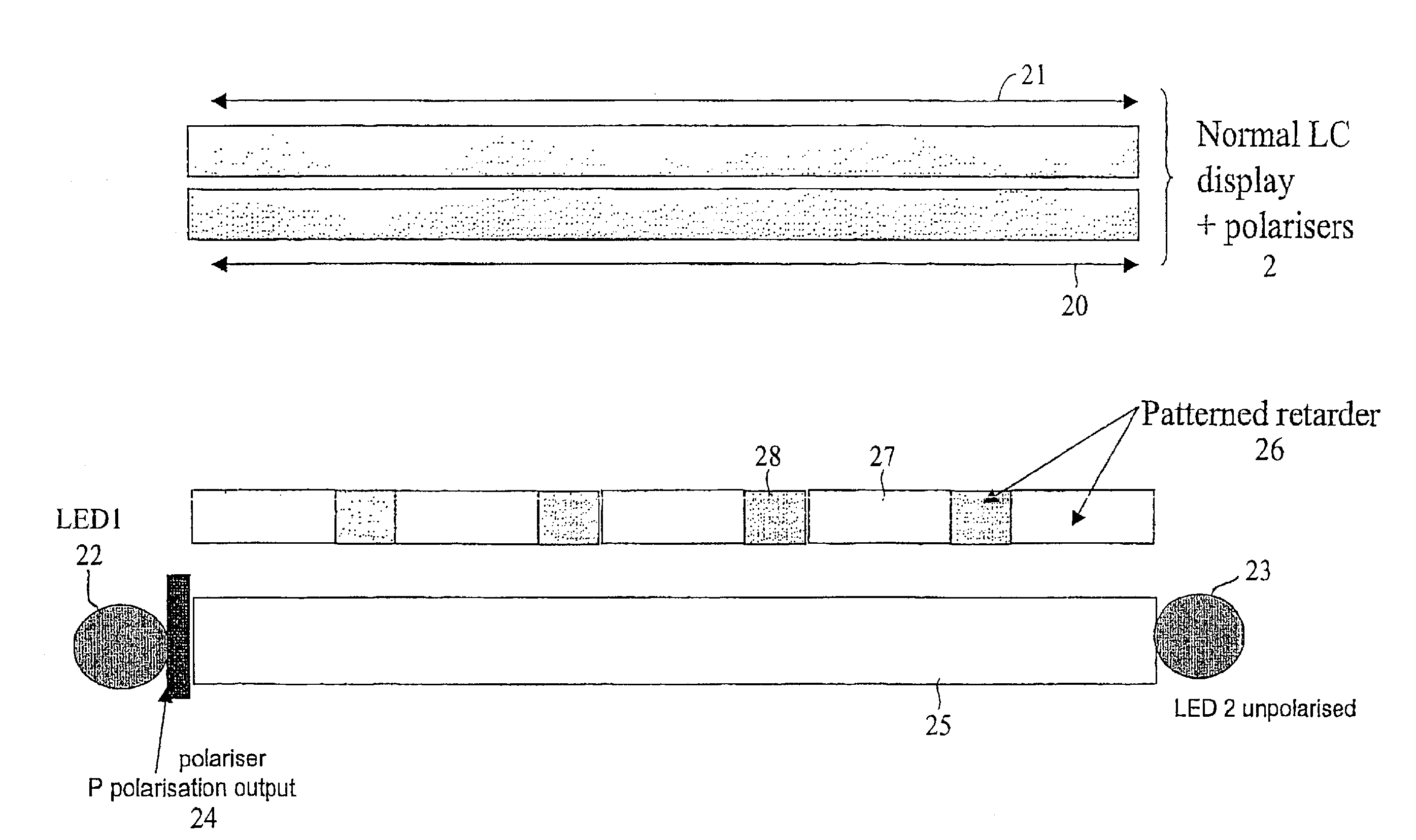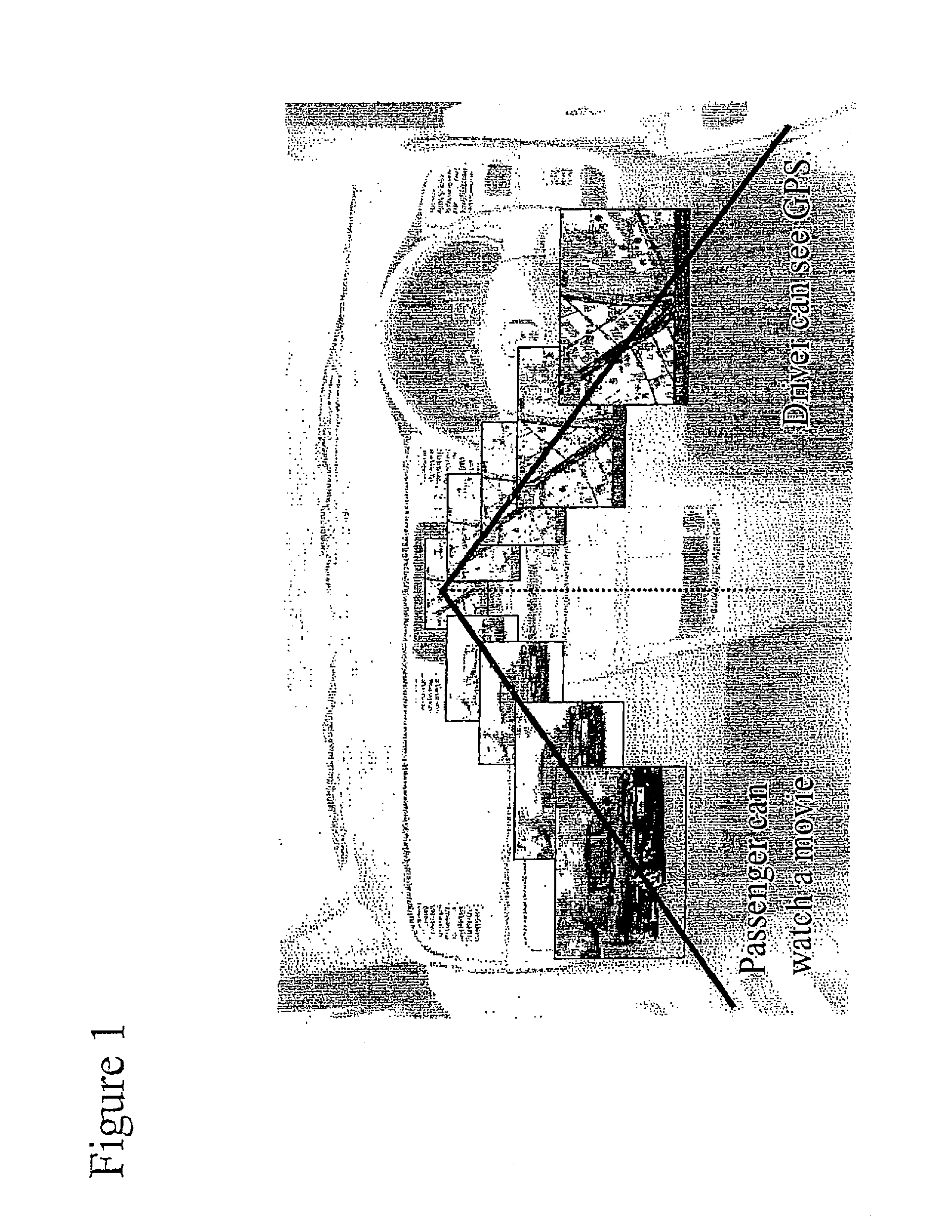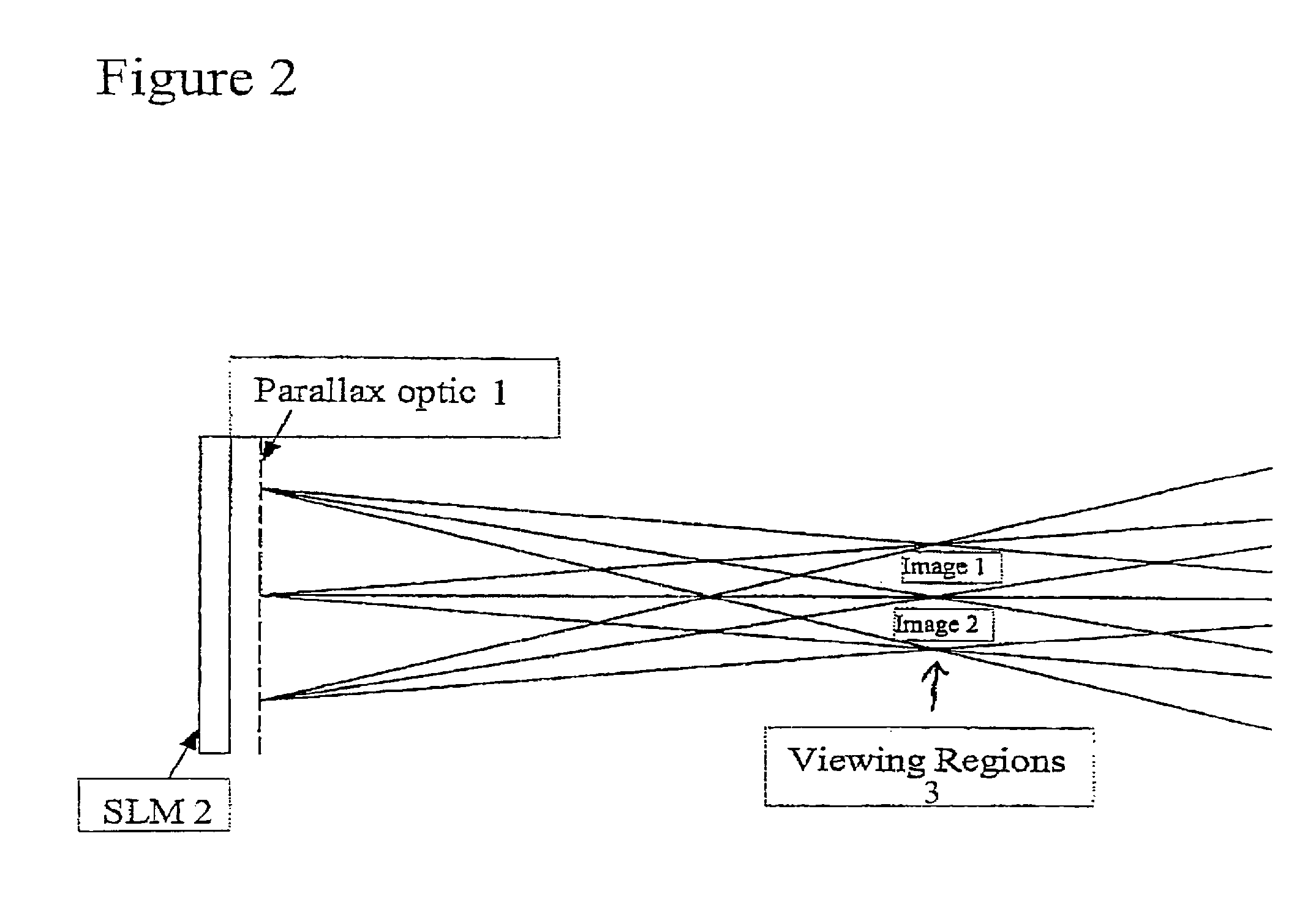Display
a technology of display and display panel, applied in the field of displays, can solve the problems of image degradation, distracting image mixing, and more noticeable problems, and achieve the effect of increasing luminance and reducing image mixing
- Summary
- Abstract
- Description
- Claims
- Application Information
AI Technical Summary
Benefits of technology
Problems solved by technology
Method used
Image
Examples
Embodiment Construction
[0068] The display shown in FIG. 5 comprises a conventional LCD 2 including input and output polarisers 20 and 21. The LCD 2 is of the transmissive or trans-reflective type and cooperates with a backlight comprising light sources 22 and 23, for example comprising light emitting diodes (LEDs), a polariser 24 which, in this example, transmits P polarised light, a light guide 25, and a patterned retarder 26. In order to prevent or reduce depolarisation of the polarised light supplied by the light source 22 and the polariser 24 within the light guide 25, the light guide may contain nanoparticle elements for reducing residual birefringence as described in Proceedings of International Displays Workshop 2004, paper LCT4-3 “Nanoparticle Zero Birefringence Backlight Waveguide”.
[0069] The patterned retarder 26 comprises a half wave plate having regions such as 27, whose optic axis is oriented so as not to have an effect on P polarised light, and regions 28, whose optic axis is oriented so as...
PUM
 Login to View More
Login to View More Abstract
Description
Claims
Application Information
 Login to View More
Login to View More - R&D
- Intellectual Property
- Life Sciences
- Materials
- Tech Scout
- Unparalleled Data Quality
- Higher Quality Content
- 60% Fewer Hallucinations
Browse by: Latest US Patents, China's latest patents, Technical Efficacy Thesaurus, Application Domain, Technology Topic, Popular Technical Reports.
© 2025 PatSnap. All rights reserved.Legal|Privacy policy|Modern Slavery Act Transparency Statement|Sitemap|About US| Contact US: help@patsnap.com



